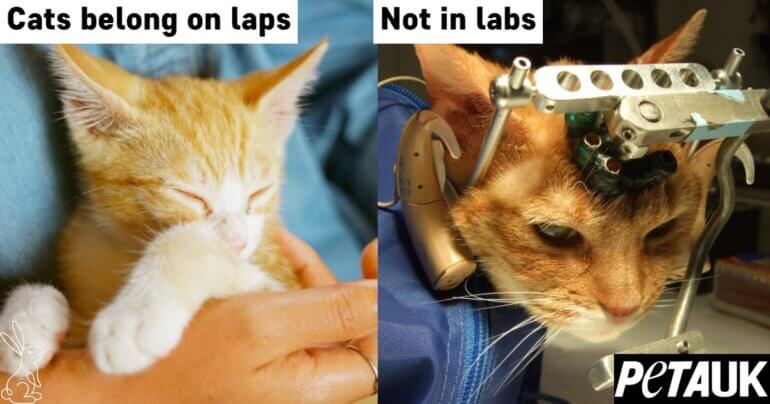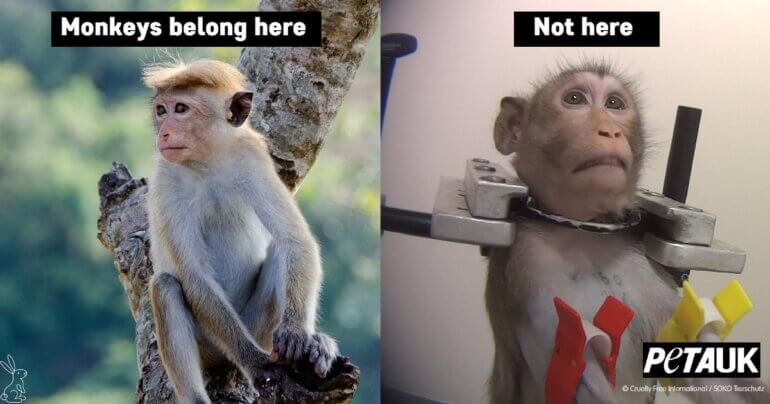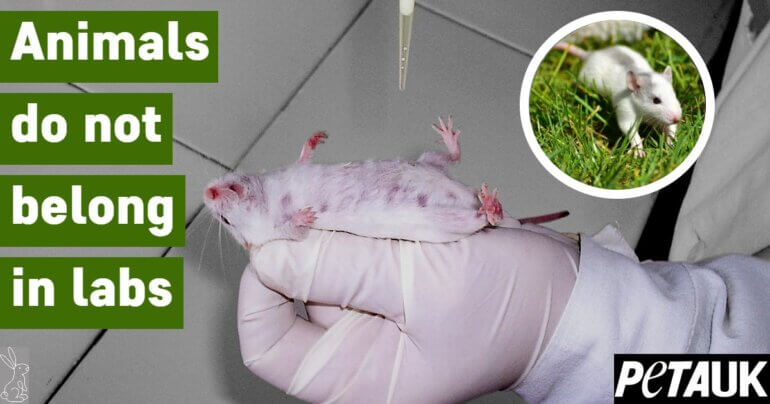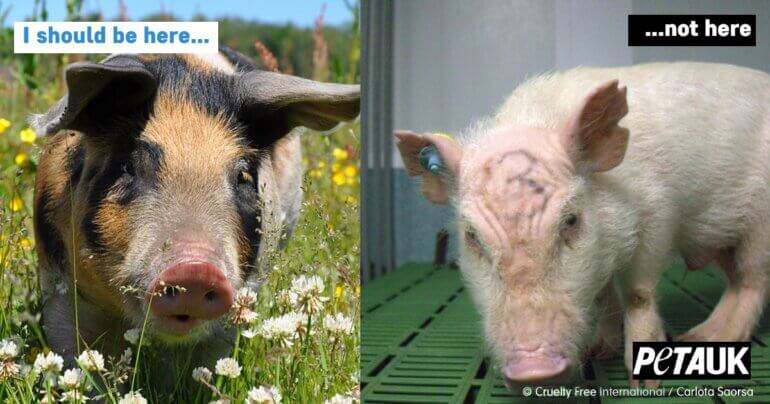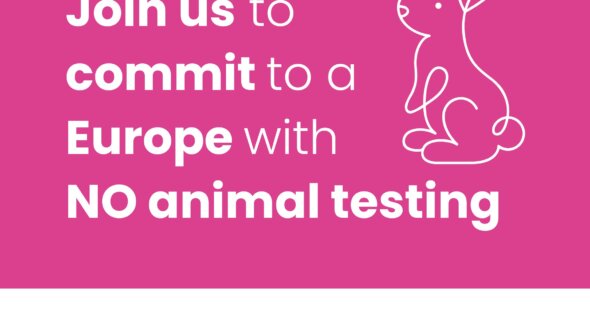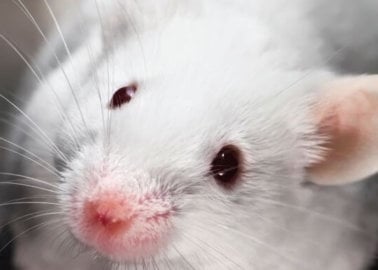5 Animals Tested On in EU Laboratories
Across the EU, animals are used in painful, drawn-out experiments that actually serve us no purpose and for which there is no need. Do you know which animals are hurt? Here are just five of the many animals tested on in EU laboratories. They all need your help right now.
DOGS

Every year, thousands of dogs are among the animals tested on in the EU. Most of them are beagles, who are used because of their gentle, trusting nature.
They may be force-fed drugs, pesticides, or other toxic chemicals through a tube thrust down their throat or forced to inhale substances for weeks, months, or even more than a year to measure the effects of repeat exposure on their vital organs and nervous system. Dogs are loving companions, not laboratory equipment.
CATS
If you fill out the right paperwork, torturing cats is legal in the EU if done in a laboratory.
Thousands of cats tested on in laboratories across the EU are kept in bleak, miserable conditions. They may be jabbed with needles or have metal plates screwed into their skulls and electrodes attached to their spines.
Some are just kittens.
They would love nothing more than to chase a crinkly ball around the house or take a good, long nap on a warm lap. Sadly, they’ll never know what that feels like, because when the experiments are finished, the animals tested on are often killed.
MONKEYS
Monkeys are sensitive, intelligent beings, but in labs across the EU, they are treated as disposable laboratory equipment. The animals tested on may go insane from the physical abuse and psychological stress that they are forced to endure. They may be shaved, tattooed, placed in restraint cages, infected with debilitating diseases, or surgically mutilated.
They often spend their lives caged in clinical conditions and are sometimes deprived of even food or water to make them more compliant. The experimenters can do almost anything to monkeys, including removing parts of their skulls to implant electrodes, forcing tubes up their nostrils or down their throats to pump drugs into their stomachs, or infecting them with deadly diseases.
RATS
Did you know that rats express empathy when another rat is in distress or that baby rats giggle when they are tickled? Sadly, there’s little limit to the ways experimenters can torment rats in a laboratory. From being cut open and intentionally infected with their own faecal matter to being forced to endure terrifying near-drowning experiments, millions of rats undergo horrific procedures in the EU every year.
Rats are often used to assess the effect a substance has on the reproductive ability of the animals tested on and on the development of their babies. To see if their babies will be deformed in the womb, experimenters may force-feed hundreds of rats an ingredient throughout pregnancy before killing and dissecting them and their unborn babies. In other tests, experimenters allow the babies to be born, only for the young to experience the same miserable fate as their mothers. Such tests are even being used to assess cosmetics ingredients with a long history of safe use.
PIGS
Pigs are playful, friendly, sensitive, and intelligent animals. They are known to enjoy listening to music, playing with balls, and even getting massages. But that’s not the life that thousands of pigs experience across the EU as one of the animals tested on in laboratories.
Pigs used in experiments are infected with diseases such as diabetes, made to suffer from depression, and mutilated to test wound-healing or plastic surgery techniques. They may be subjected to painful invasive surgeries, which many never recover from. Those who do are often killed at the end of the experiment.
There Are Kinder Options!
Experiments cause the animals tested on a great deal of suffering, and they produce dangerously misleading results that are generally inapplicable to humans. With this in mind, the world’s most forward-thinking scientists are developing and using methods of studying diseases and testing products that can replace the use of animals and are actually relevant to human health.
These modern methods include sophisticated tests using human cells and tissues (also known as in vitro methods), advanced computer-modelling techniques (often referred to as in silico models), and studies with human volunteers. These and other non-animal methods are not hindered by species differences that make applying animal-test results to humans difficult or impossible, and they are usually more time- and cost-efficient.
What Is the Save Cruelty-Free Cosmetics ECI About?
We want to see humane, human-relevant, animal-free science properly funded and fully utilised – that’s why we need you to join us in signing or sharing the European Citizens’ Initiative (ECI) calling on the European Commission to take the following actions:
• Protect the ban on cosmetics testing on animals.
• Transform EU chemicals regulation.
• Phase out all animal testing in the EU.
Always Shop Cruelty-Free
Do you check the back of every product you buy for that “cruelty-free” label? Reading the small print pays off for animals. To make it easier, keep the PETA US “Beauty Without Bunnies” database handy while shopping:
Empty the Cages
All EU citizens, regardless of where you live, can help end all tests on animals by signing the ECI.
If you are not an EU citizen, you can still use your voice for animals tested on in laboratories by sharing the ECI! Share the link as much as you can, and ask others to do the same. The more people who see it, the more will sign it. Every signature matters for animals who are suffering in cages for pointless experiments.

